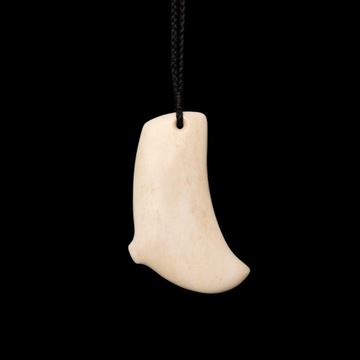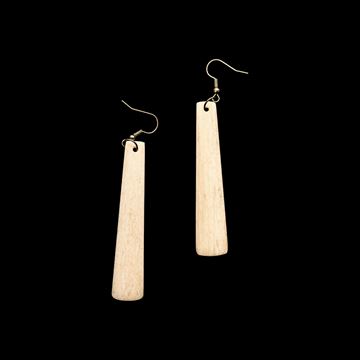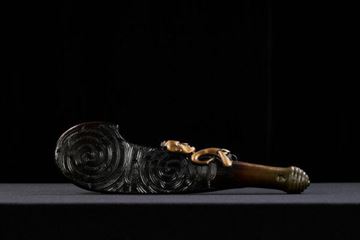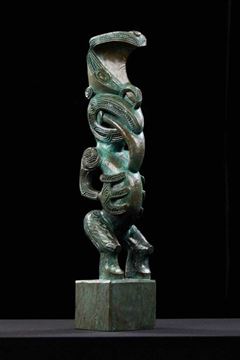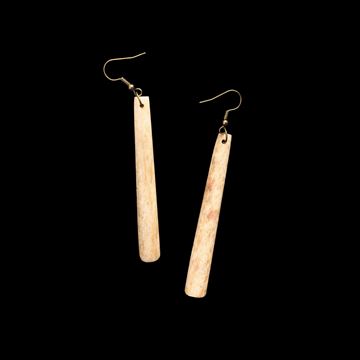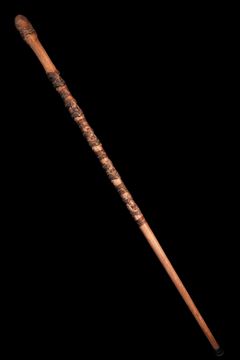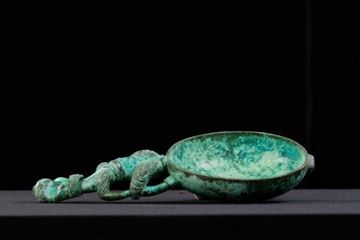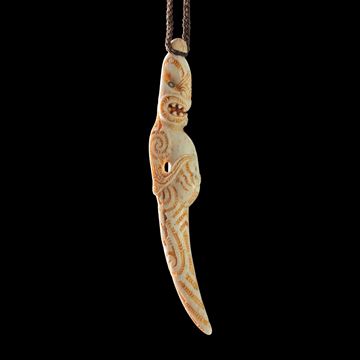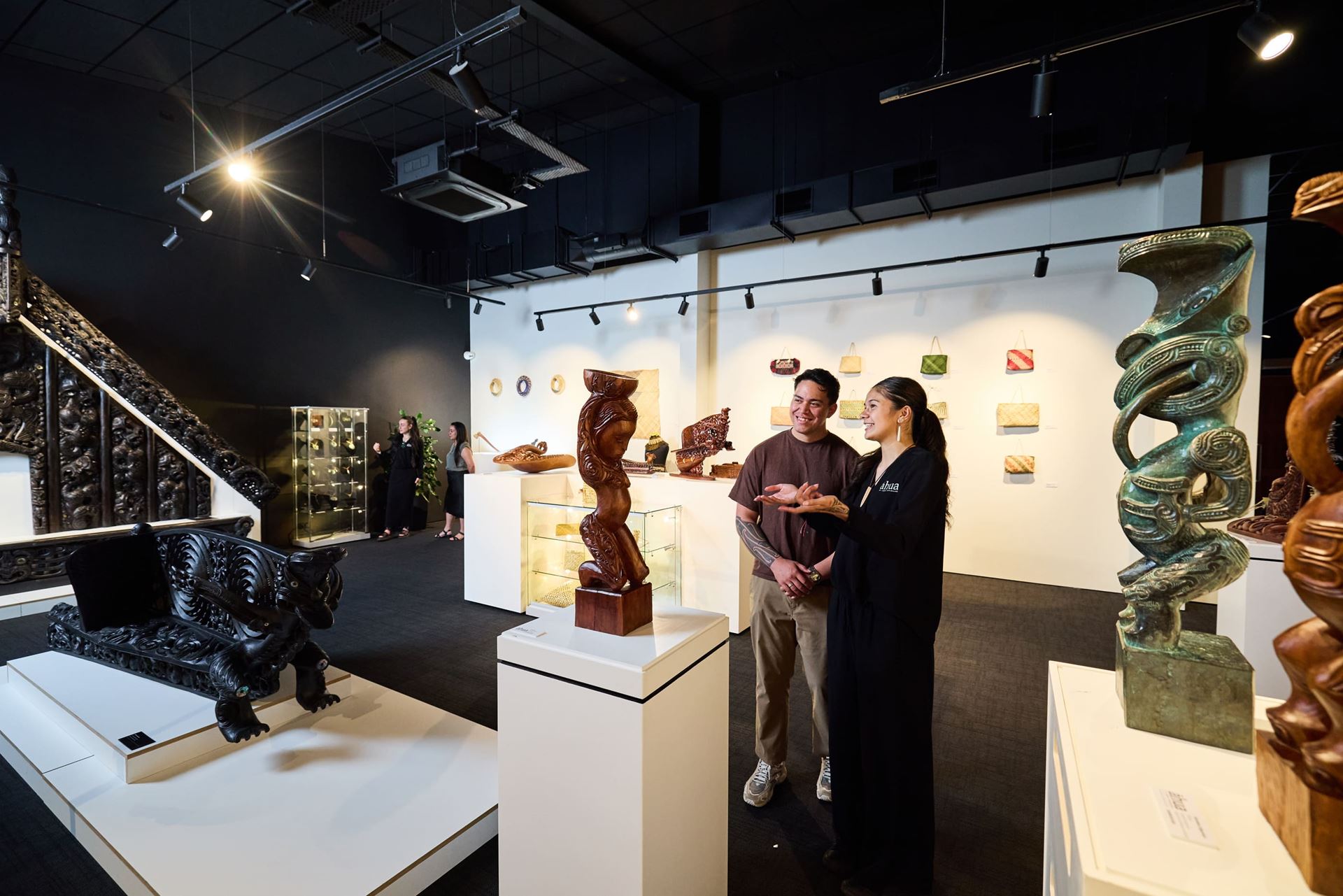
Āhua Gallery
Select Subcategory
Rei Niho - 5266IA
The mark of a high Chief was one who wore the hei niho (whale tooth pendant), as the teeth of the sperm whale were highly prized because of their rarity. Usually these pendants had simply etched out eyes to form a head at one end. With actual whale teeth being such a rarity, it became common to fashion the tooth form from other materials.
Material: Koiwi (Beef Bone)
Measurements: 60mm x 33mm x 4mm
$220.00
Toki Earrings - 5698RH
Toki earrings (or drop earrings) are designed to suspend from the bottom of the earlobes. The length varies from a centimetre or two, all the way to brushing the wearer's shoulders.
Material: Parāoa (Whalebone)
Measurements: 66mm x 14mm x 4mm
$490.00
Wahaika - Black w Bronze (ed. 1/6) - 2487FD
The literal meaning of wahaika is: ‘waha’ (mouth); and, ‘ika’ (fish). It was specifically named because of the gap on the side of the weapon. Wahaika were used in close hand-to-hand combat to defect blows, and to strike the chest, head and wrist. Many wahaika have a small figure carved on their side called a pūkaiora which represented a tribal war God that would guard over the warrior during battle. The whiti or small head at the end of the handle was also a form of guardian. Wahaika are usually made from native hardwoods or whalebone.
$7,500.00
Bronze Tekoteko - 2478FD
The tekoteko is a stylised representation of the main progenitor of a tribe and is the most focal point of the whare whakairo (carved tribal meeting house). They can be found – on traditional meeting houses – either at the highest point at the front apex of the roof or at the front central post. They can also be found at the base of the poutokomanawa (the main central ridge support post) of the house.
$18,000.00
Toki Earrings - 6826RH
Toki earrings (or drop earrings) are designed to suspend from the bottom of the earlobes. The length varies from a centimetre or two, all the way to brushing the wearer's shoulders.
Material: Parāoa (Whalebone)
Measurements: 70mm x 9mm x 5mm
$490.00
Tokotoko - 6853TH
Tokotoko are used when speaking on the marae – by esteemed orators – to indicate the direction of a speaker’s kōrero (speech). They often have the whakapapa (genealogy) of the orator carved into them and these can also be referenced by the orator during his address.
Material: Rātā
Measurements: 1050mm x 45mm x 45mm
$7,990.00
Aurei - 5474MA
Aurei were customarily used as a pin for fastening cloaks and may be made from bone, stone, wood or shell. They may also have been worn through the ear as an earring or around the neck as a pendant. Aurei are still commonly worn as pendants and earrings and as with most Māori personal adornments, are often passed down generationally.
Material: Parāoa (Whalebone)
Measurements: 142mm x 15mm x 23mm
$1,900.00

